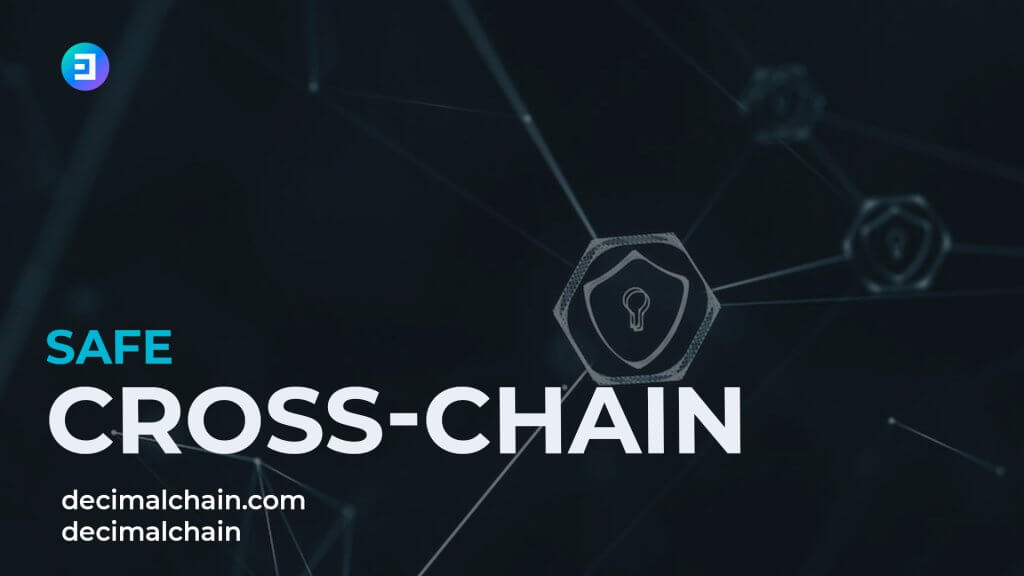Security within cross-chain communication
Decimal Smart Chain is expected to launch in Q4 2022. A group of enthusiastic users and Decimal developers have already tested Devnet DSC. We will switch the network from Devnet to Testnet this month, enabling everyone to start developing their projects on the smartchain.
Recently, the audience asked us a very interesting question that needs a close look. What about security within interchain communication?
When it comes to blockchain security, there are many different answers and solutions. This text will take an in-depth look at the security aspects of each of the participants in inter-chain communication, how they are protected and how it works. At the very end of the article, there will be a conclusion about why interconnect communication in Decimalchain, Cosmos and IBC is secure.
Security in Decimalchain
Smartchain as well as the Decimal main network run on the DPoS consensus algorithm, built in the Cosmos ecosystem, and based on the Cosmos SDK. The consensus algorithm in this multichain is PoS, and the name of the algorithm running in the network is Tendermint Core. It is responsible for security in the confirmation and replication of the same transactions across all nodes in the network.
IBC security
IBC is an inter-blockchain communication protocol, you can learn what it is and how it works at Decimal here.
The IBC light client provides confirmation and verification. The light client is a node that works separately from the others and is responsible for verifying, validating and completing transactions from both blockchains involved in the inter-chain communication. The light client is responsible for confirming information, while the relayers belong directly to the blockchain. Otherwise, when all the relayers work through the byzantine fault tolerance (BFT), incorrect and unconfirmed data will simply not be allowed to pass further due to incorrect matching.
BFT, or “Byzantine Fault Tolerance”, is considered one of the most reliable and secure algorithms because of the system’s operability even if 2 of 3 of the computers (nodes) in the network are running.
The security level of IBC corresponds to the security level of the networks between which the communication is taking place. What does it mean? The IBC light client receives data about the consensus specifications and consensus algorithm state in the blockchain needed to verify proving the consensus state in the target blockchain properly. All data about the source blockchain, the target blockchain, and the node that carried out the inter-chain transaction is stored inside the block. If the end user or application does not trust the source blockchain, it is always possible to address the records inside the block. There is no need to trust the bridge’s validators or other proving participants in the blockchain.
EVM security
The Ethereum virtual machine operates on The Turing completeness principle. In other words, each node in the Ethereum network must agree with the next node, thus performing the same actions. So EVM performs a logical sequence to perform a particular function. There is a specific fuel for EVMs, which means that all operations performed on an EVM are paid for in gas. Gas is a unit of value on the Ethereum network. Payments in gas include transaction fees, the execution of smart contracts, the operation of dapps and also, and anything that runs within the virtual machine. Payment in gas complements the Turing completeness algorithm and does not allow transactions to be run or executed without gas.
How does it all work together?
Networks communicate with each other using cross-bridges. To summarise: the Decimal blockchain is secured by the DPoS consensus algorithm and Tendermint Core, which is used in the Cosmos ecosystem; the IBC matches the security algorithms of the networks between which the transaction occurs and also work with relayers between networks that utilise BFT; EVM is a Turing completeness machine which algorithm matches the information to all nodes simultaneously and only works when gas is provided.
Communication and security are performed by the following:
EVM is implemented in Decimalchain, just as IBC is built into the blockchain at the start. The IBC protocol not only works within Cosmos but also with all other blockchains with crosschain communication capability. A smart contract and application already running on an EVM cannot be rewritten and changed, as the logic is already executed.
